Impact Crusher VS Hammer Crusher [7 Pics & 10 Tips]
Impact crusher and hammer crusher both use impact principle to crush materials, and the finished material has excellent particle shape. From the appearance, impact crusher and hammer crusher are similar, but they are different in many aspects, so which is better?
This article will introduces the differences of impact crusher and hammer crusher from the structure, working principle and applications etc..
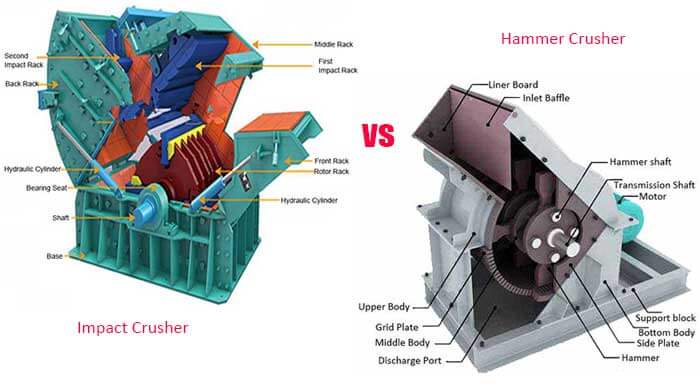
Impact Crusher VS Hammer Crusher
1. Different Structure
The impact crusher is mainly composed of hammerhead, main shaft, impact plate, rotor, frame and grate bar. Several rows of hanging hammers are arranged on the main shaft of the impact crusher.
Hammer crusher is divided into single rotor and double rotor. The main body is composed of box, rotor, hammer head, impact lining plate, sieve plate, etc. it can directly crush the material with the maximum particle size of 600-1800 mm to 25mm or below.
2. Crushing Chamber
The impact crusher has a large crushing chamber, which makes the material have a large space of activity and makes full use of the impact effect.
In contrast, the crushing chamber of hammer crusher is smaller, the impact effect cannot be fully exerted, and the impact crusher is of multi chamber crushing structure, so the crushing is more sufficient.
3. Plate Hammer & Hammer Head
The plate hammer and rotor of the impact crusher are rigidly connected. The inertia of the whole rotor is used to impact the material (free crushing, impact crushing, milling crushing), so that materials can not only be crushed but also obtain a larger speed and kinetic energy. The plate hammer is used to smash the input material from the bottom to up and throw it onto the upper impact plate.
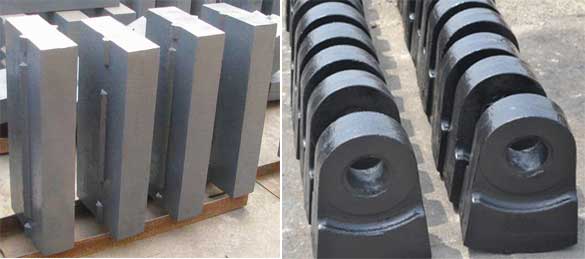
The hammer head of the hammer crusher is used to crush the material (free crushing, impact crushing), and the speed and kinetic energy obtained by the material are limited. The hammer head striking materials along the material falling direction, with small crushing effect.
4. Wear Resistance of Wearing Parts
The wear of impact crusher plate hammer often occurs on the side that facing the materials, and its metal utilization rate can be as high as 45% – 48%. When crushing limestone, the plate hammer of impact crusher is not seriously worn, but when crushing granite (with high hardness, it can be broken by cone crusher), the plate hammer needs to be replaced constantly.
The hammer head of hammer crusher is in a suspended state, and the wear occurs at the top, front, back and side. Compared with plate hammer, the hammer head is more seriously worn, the metal utilization rate of hammer head is about 35%, and the rotor may also be worn.
In addition, if the bottom sieve plate of hammer crusher is seriously worn, all the screens should be replaced, and the replacement of sieve plate is complex.
5. Output Size Adjustment
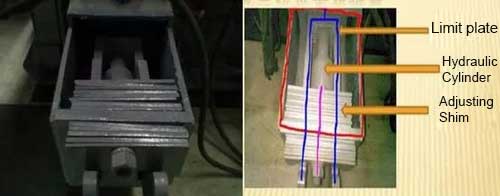
Hammer crusher controls the particle size of the material through the castor bar installed at the bottom.
The impact crusher has no sieve structure such as castor bar, and it controls the separation of particles by adjusting device.
6. Materials with Water Content
The feeding chute and the counterattack plate of the impact crusher can be equipped with heating device to prevent the material from binding, so the material with large water content can be crushed and the blocking is not easy to occur.
Hammer crusher can’t prevent material from sticking by heating and can’t crush material with high moisture content.
7. Material Blocking

The impact crusher is not easy to block the material. First, it can be equipped with heating device to prevent the material from blocking due to sticking. Second, there is no grate bar at the bottom. The product size is determined by the gap between the impact plate and the plate hammer. Therefore, when handling the material with too much water content, it can avoid blocking the grate bar when crushing the wet material.
Hammer crusher is equipped with bottom sieve plate, which increases the probability of blocking.
8. Crushing Ratio & Particle Shape
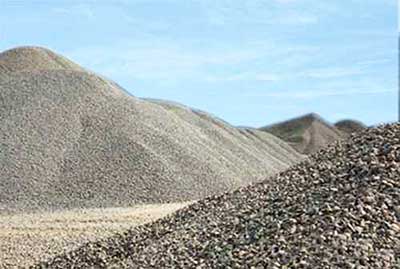
The crushing ratio of the impact crusher > 50, the discharge is cubic, the particle size is uniform, and the content of fine powder and dust is low.
So, the impact crusher can be used as the final crushing equipment to produce concrete aggregate for the antiskid pavement of high-grade highway.
The crushing ratio of hammer crusher is 10-25, the content of needle and flake is more, and the powder content is higher.
9. Different Application Scope
Both of them are suitable for crushing medium and hard materials, but the impact crusher is mostly used as the secondary crushing equipment. While the hammer crusher is mostly used in the cement production line, as the limestone raw material crushing equipment, or as the primary crushing equipment in the sand aggregate plant.
The compressive strength of materials suitable for hammer crusher is within 200MPa, such as coal gangue and limestone, while the compressive strength of materials suitable for impact crusher is within 350Mpa, such as gypsum, coal gangue, limestone, river pebble, sandstone, quartzite, etc. the application scope of impact crusher is wider.

10. Use and Maintenance
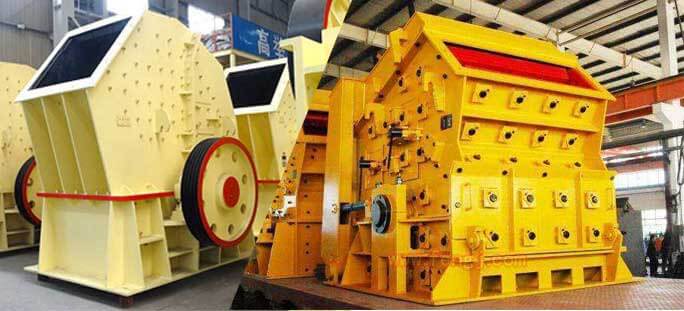
In the market, the frame part of the advanced impact crusher is a three-part structure, which only needs to open the shell at the back of the crusher to replace the plate hammer, impact plate, lining plate and other maintenance operations. Moreover, there are few varieties of vulnerable parts, which is convenient for the purchase and management of spare parts.
It takes a lot of time and manpower to replace the hammer head of hammer crusher, and the cost of maintenance is high. The replacement of bottom sieve plate is also troublesome.
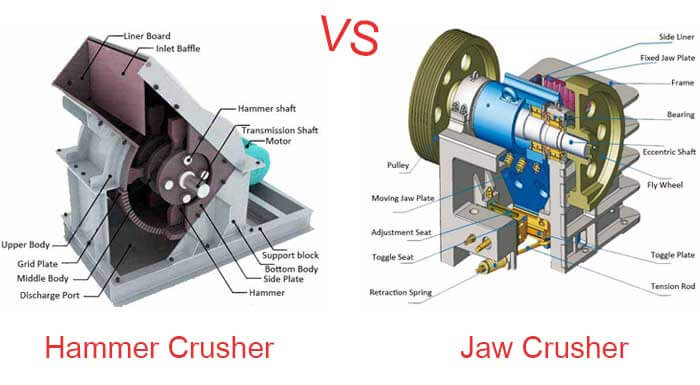 Hammer Crusher VS Jaw Crusher
Hammer Crusher VS Jaw Crusher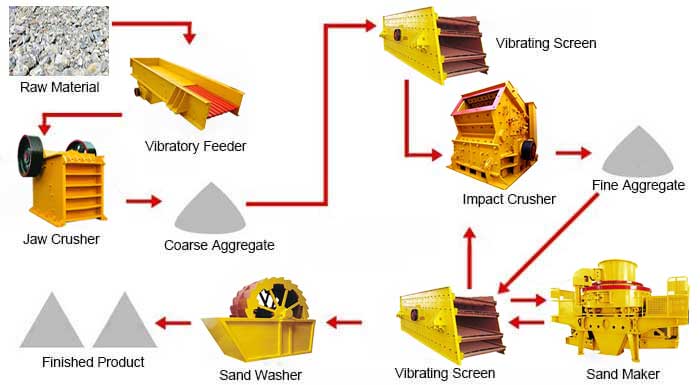 Jaw Crusher VS Impact Crusher
Jaw Crusher VS Impact Crusher Which is Better Sand Maker? Hammer, Vertical or Roll Crusher
Which is Better Sand Maker? Hammer, Vertical or Roll Crusher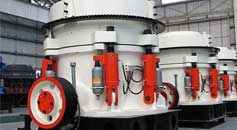 8 Tips Help To Maintain Cone Crusher
8 Tips Help To Maintain Cone Crusher



